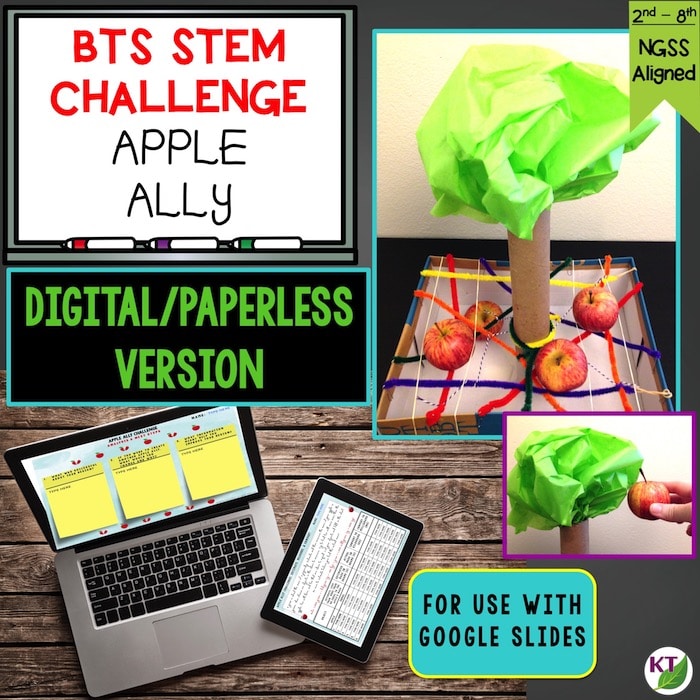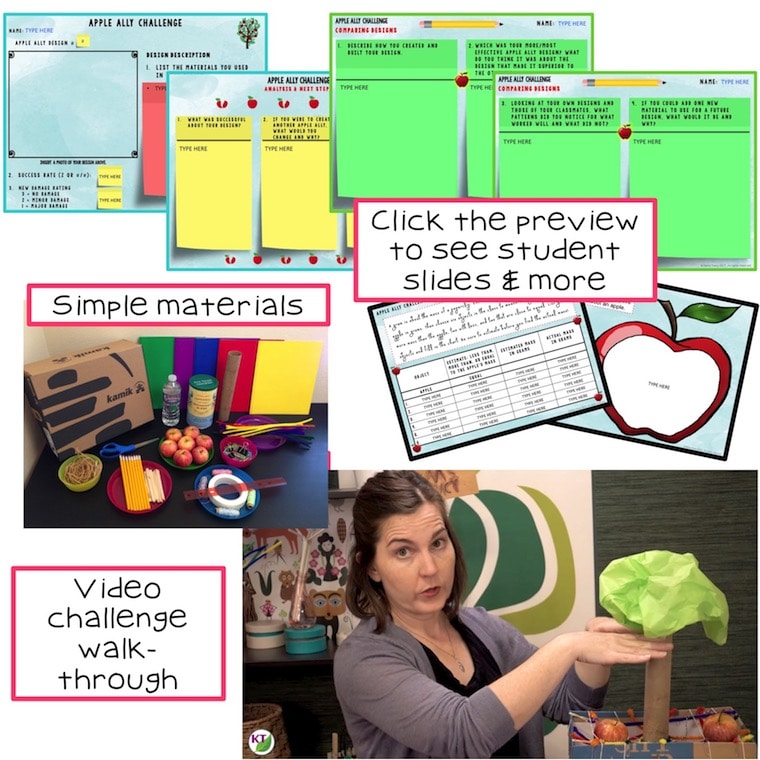This back-to-school STEM / STEAM Challenge brings the joy back to your classroom with collaborative, hands-on, brain-busting work (disguised as fun)!
The basic premise:
In partners/groups, students will design and build an apple catcher to keep falling apples from hitting the ground.
Plus, this is a great intro to forces and interactions and Newton’s three laws of motion, which are part of 3rd and middle school NGSS standards! (3PS2-1, MS-PS2-1, and MS-PS2-2)
This challenge is also great for any time of year, but especially in the fall when learning about apples, Johnny Appleseed, or Sir Isaac Newton!
Note: This version is for use with Google Slides in 1:1/paperless classrooms. If you prefer to print and have students complete work with paper/pencil, you’ll want to look at the printable version instead.
If you have questions about which version is right for you, please feel free to leave me a question using the product Q&A below.
Resource includes:
NGSS aligned standards, Grades 2 – 8
Teacher Tips
– Links to STEM Challenge How-To videos
– Materials and timing
– Criteria & Constraints (including modifications to increase difficulty for older students)
– Measuring results
– Post-design extension activities list
– Link to a video walk-through of the challenge
Student Slides
– Criteria & Constraints List (editable version provided)
– Design Analysis
– Discussion Questions
Extension slides
– Process Flow Map
– Create & Solve Math Problems Based on Designs
– Several video slides for broadening understanding of forces & motion
– Estimate, Measure, & Convert Mass Practice (teacher-editable)
Sample/suggested materials for each student or group:
Materials you’ll need to do the activity are easily modified. See disclosure.
- Apple (1)
- Large boxes without lids (at least 10 in. x 10 in. – shoe boxes, shipping boxes, etc.).
- Try to get similarly-sized boxes or supplement the materials of groups with larger boxes.
- For increased difficulty, have students build on a cardboard or foam board base (no raised edges)
- Cylindrical object (1)
- Coffee can, paper towel tube, water bottle, rolled file folder, 6 or more pencils tied together, etc.
- Unsharpened pencils (10 – 12)
- Pipe cleaners (10)
- Small and/or large paperclips (20)
- Rubber bands (5 – 10)
- Tape (24 – 36 in.)
- String or yarn (24 – 36 in.)
- Ruler
- Scissors
- Design analysis handouts (included in resource)
Optional:
- Craft sticks
- Foil or lunch bags
- Binder clips
- Decorative green & red paper to build out the tree
Benefits of this STEM Design Challenge:
– Focus on critical thinking, problem solving, and application of learning
– Helps students develop growth mindset traits like persistence and resilience
– High levels of student engagement
– The potential to hit upon all NGSS ETS standards depending on the depth and number of iterations you choose to implement in your classroom (modifications included)
– Highly flexible and differentiated for materials, timing, grade levels, and rigor.
Each design iteration should be planned for ~60-90 min. if you are including data gathering and analysis rather than just building for fun. If you add extension activities, you will need to adjust timing accordingly.












Reviews
There are no reviews yet.